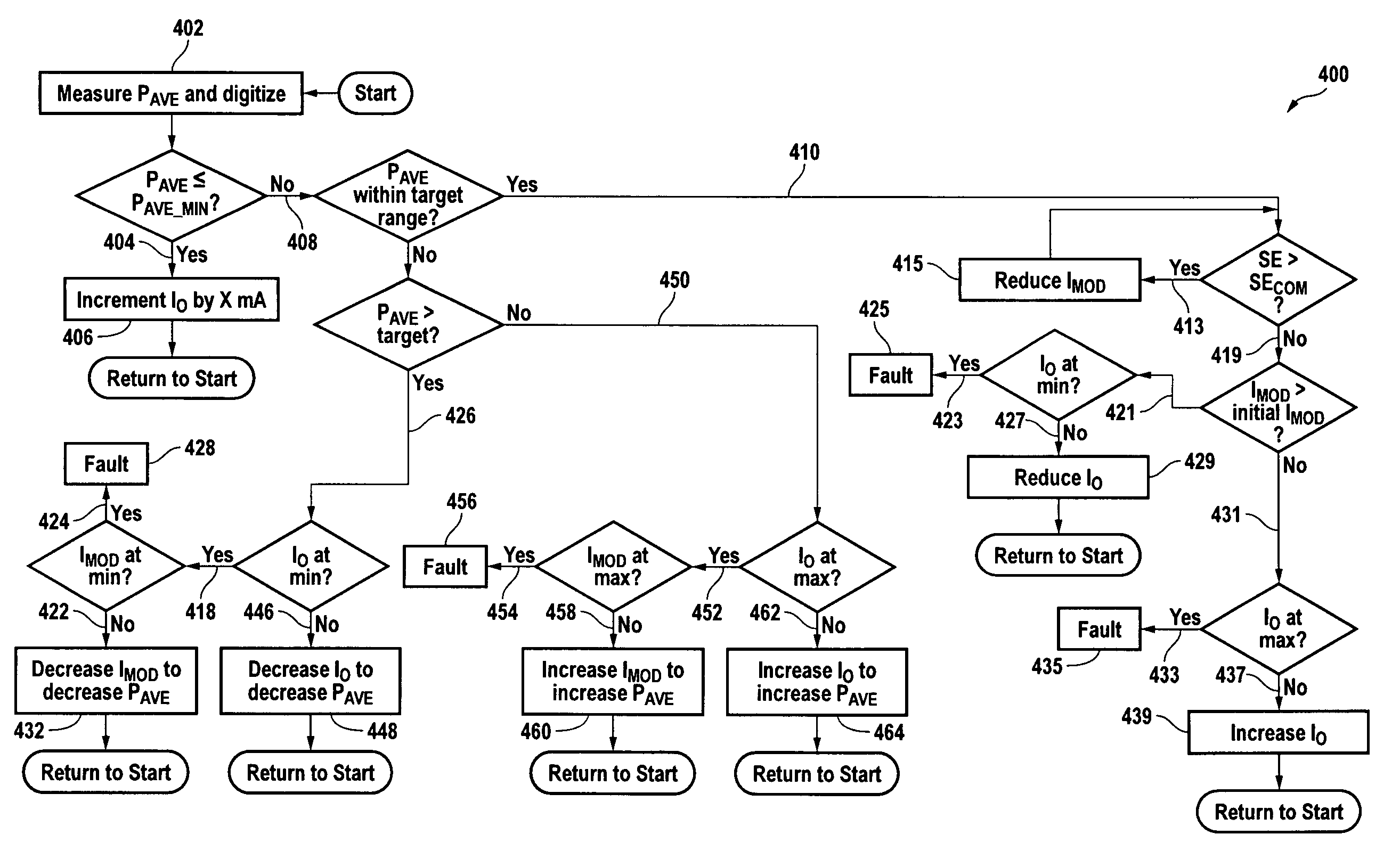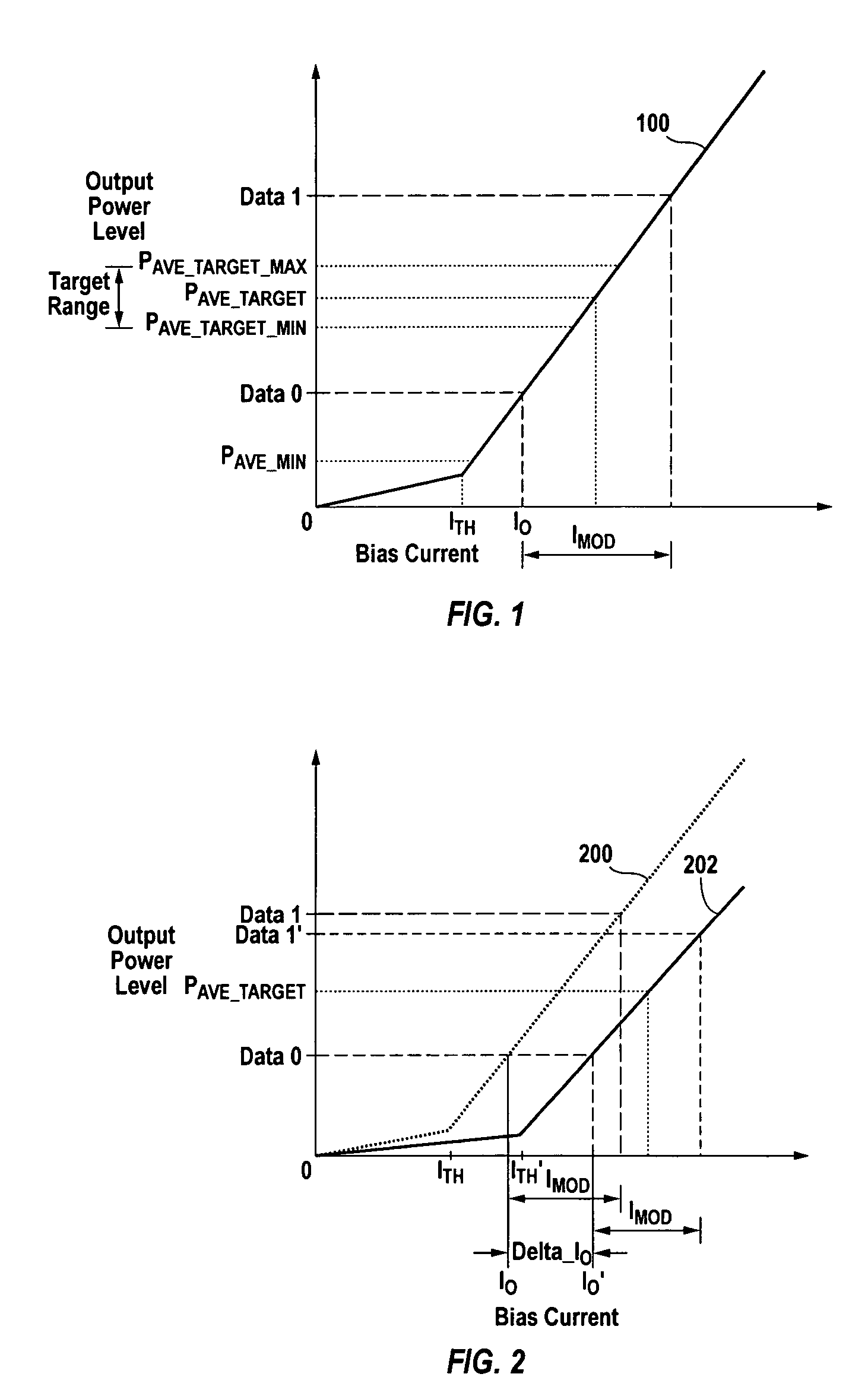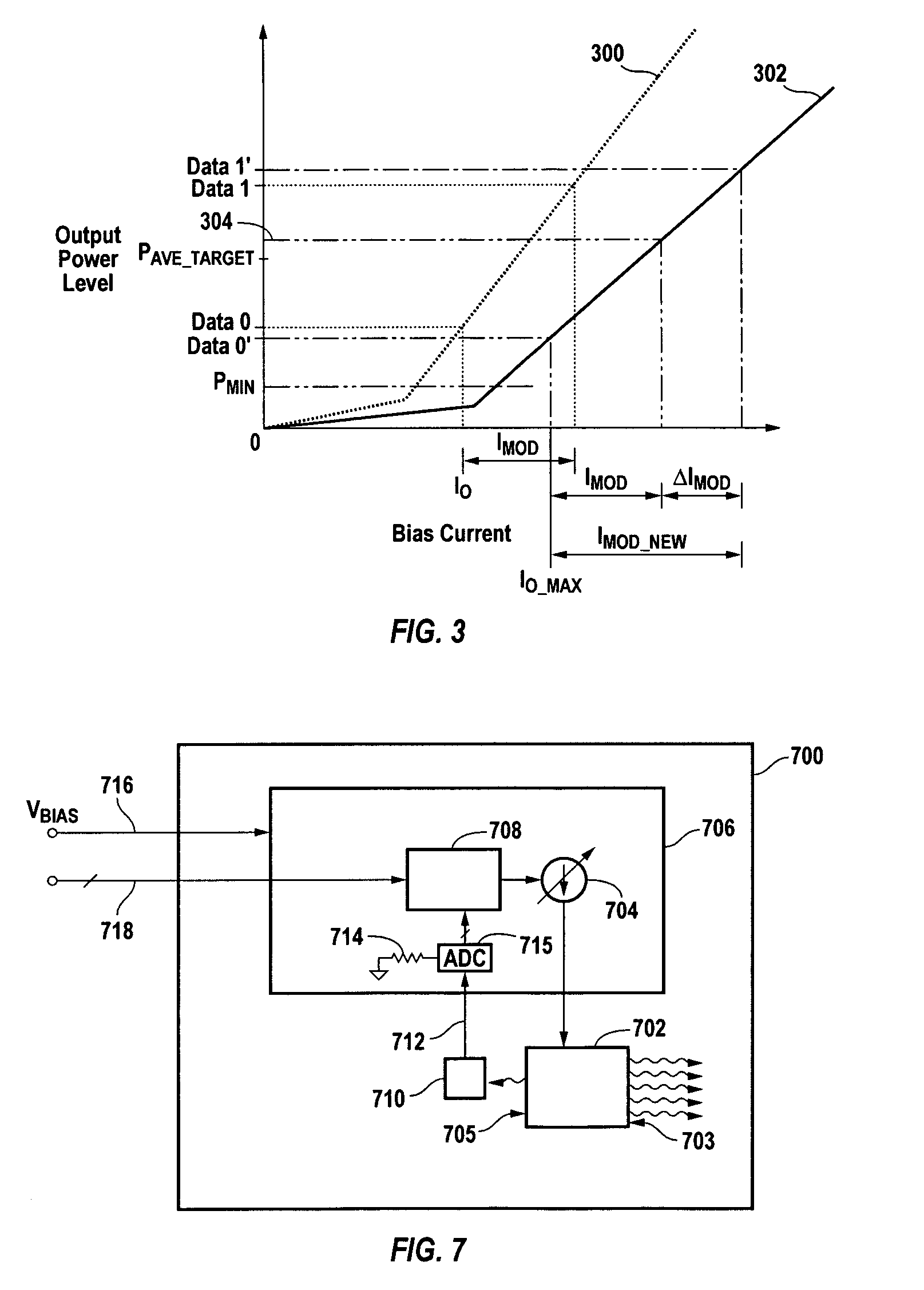Method of monitoring and controlling a laser diode
a laser diode and monitoring and control technology, applied in the direction of semiconductor lasers, distance measurement, instruments, etc., can solve the problems of insufficient control bits used to set the bias current in a particular application, inability to reliably receive too dim light, and inability to overcome changes in light power. , to achieve the effect of slope efficiency
- Summary
- Abstract
- Description
- Claims
- Application Information
AI Technical Summary
Benefits of technology
Problems solved by technology
Method used
Image
Examples
Embodiment Construction
I. Exemplary Diode Characteristic
[0021]FIG. 1 shows a plot 100 of average light output power (“PAVE”) versus bias current for an exemplary laser diode. PAVE is the average output power (typically expressed in mW) when the laser diode is transmitting a 1-0-1-0-1 . . . data stream. A DATA 0 (LOW) condition is when the laser diode is biased at a low bias current I0, and a DATA 1 (HIGH) condition is when the laser is biased at a high bias current I0+IMOD. PAVE is the average of the output power level at DATA 1 and the output power level at DATA 0. For a fixed IMOD, PAVE increases slightly with increasing bias current until the threshold current (“ITH”) 101 is reached, after which PAVE more rapidly increases with increasing bias current. The relationship between PAVE and bias current above PAVE—MIN is called the slope efficiency (“SE”).
[0022]Photodiodes are typically used as the light detectors in optical feedback loops. Such photodiodes have leakage (“dark”) current. Measuring the SE ab...
PUM
 Login to View More
Login to View More Abstract
Description
Claims
Application Information
 Login to View More
Login to View More - R&D
- Intellectual Property
- Life Sciences
- Materials
- Tech Scout
- Unparalleled Data Quality
- Higher Quality Content
- 60% Fewer Hallucinations
Browse by: Latest US Patents, China's latest patents, Technical Efficacy Thesaurus, Application Domain, Technology Topic, Popular Technical Reports.
© 2025 PatSnap. All rights reserved.Legal|Privacy policy|Modern Slavery Act Transparency Statement|Sitemap|About US| Contact US: help@patsnap.com



